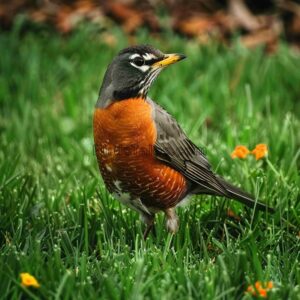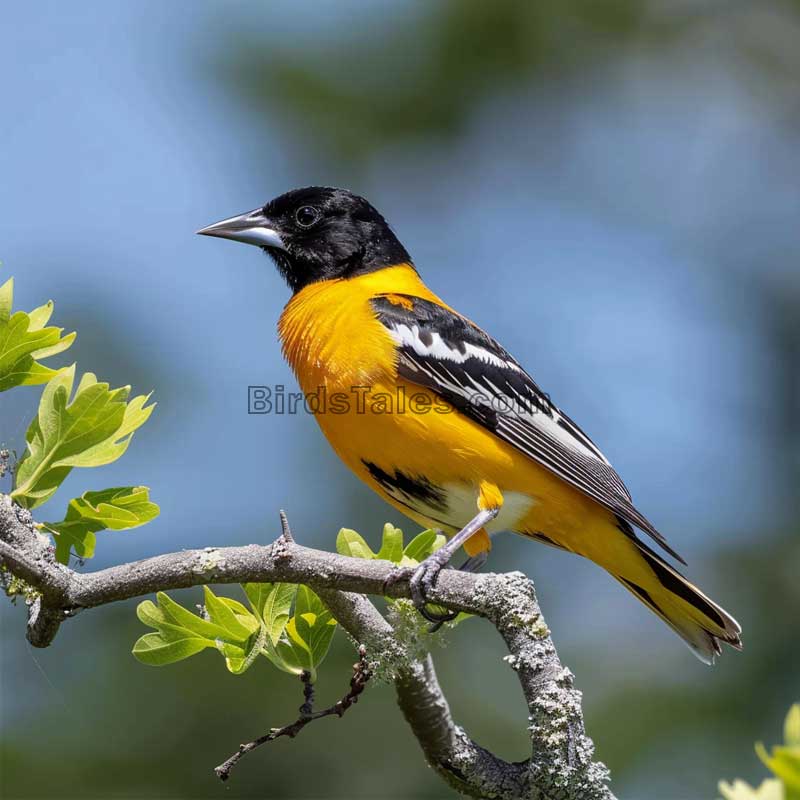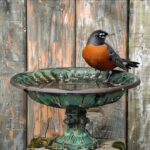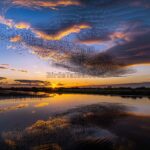Preparing for Birdwatching
Birdwatching success starts with good preparation.
This includes having the right equipment and understanding bird habitats.
Without preparation, your chances of spotting and identifying birds diminish significantly.
Choosing the Right Equipment
Equipment can make or break your birdwatching experience.
Binoculars are the birdwatcher’s best friend.
Invest in a pair with 8-power magnification.
This provides a good balance between zoom and field of view, making it easier to spot birds from a distance.
A field guide is essential.
It helps identify the birds you encounter.
Some popular choices include:
- Sibley Guide
- Kaufman’s
- Peterson’s
- National Geographic guide
Don’t overlook online resources.
The Merlin Bird ID app is fantastic for on-the-go identification.
Always keep your field guide and binoculars ready.
They are as important as a carpenter’s hammer.
How Deep Should a Birdbath Be?
Getting the depth of your birdbath right is as important as having one. Birds love water, but they aren't fans…
Understanding Bird Habitats
Knowing where to look is half the battle.
Different birds prefer different habitats.
For example:
- Forests: Home to woodpeckers, owls, and many songbirds. Look up to see birds flitting between branches.
- Wetlands: Ideal for spotting waterfowl and wading birds. Marshes, swamps, and lakesides are rich with birdlife.
- Parks and gardens: Perfect for seeing a variety of species. These areas often attract birds with diverse food sources.
Researching bird habitats can provide valuable insights.
Use resources like local birdwatching guides or websites.
Understanding habitats is like knowing where to find the best fishing spots.
Techniques for Locating Birds
Finding birds requires more than just good eyesight.
Use your senses and time your outings well.
These techniques can turn a good birdwatching session into a great one.
How Deep Should a Birdbath Be?
Getting the depth of your birdbath right is as important as having one. Birds love water, but they aren't fans…
Using Sight and Sound
Birds are often hard to see but easier to hear.
Visual cues are crucial.
Look for movement among leaves and branches.
Birds are excellent at blending in.
They’re like little ninjas of the animal world.
Bird calls are another key.
Each species has its own unique song.
Learning these calls can help you locate birds even when you can’t see them.
Practice by listening to recordings online.
Over time, you’ll become a bird call expert.
Timing Your Observations
When you go birdwatching matters.
Early morning and late afternoon are prime times.
Birds are more active then.
They are busy feeding and singing, making them easier to spot.
Seasonal changes also play a role.
Migration periods bring different birds to your area.
Spring and fall are particularly good times for birdwatching.
Knowing the seasons is like having a schedule for nature’s biggest events.
Expand your birdwatching skills by focusing on these aspects.
They will enhance your experience and help you find more birds.
How to Photograph Starling Murmurations
Starling murmurations are a sight to behold. These swirling masses of birds create stunning patterns in the sky, attracting both…
Advanced Birdwatching Skills

Mastering basic birdwatching is just the start.
To truly excel, develop advanced skills.
These skills can elevate your birdwatching game and make each outing more rewarding.
Let’s delve into some advanced techniques that seasoned birdwatchers swear by.
Learning Bird Behaviors
Understanding bird behavior is like getting a backstage pass to their world.
Birds exhibit specific behaviors that can signal their presence.
Nesting behaviors are key.
Birds flying back and forth with nesting materials often indicate nearby nests.
Watching them can reveal much without disturbing them.
Feeding habits are another clue.
Different birds have unique feeding styles.
Some forage on the ground, while others catch insects mid-air.
Observing these patterns helps you predict where and when to find them.
Birds also have specific territorial behaviors.
During breeding season, males often sing loudly to defend their territory.
Recognizing these signs can lead you to some great birdwatching spots.
It’s like having insider information.
Participating in Bird Counts
Bird counts are more than just a hobby; they are valuable scientific endeavors.
Participating in bird counts helps track bird populations and migration patterns.
It also sharpens your bird identification skills.
One popular event is the Christmas Bird Count.
Organized by the Audubon Society, this event occurs annually.
Volunteers across the country count birds in a specific area.
It’s a fun way to contribute to science and meet fellow birdwatchers.
Another event is the Great Backyard Bird Count.
This event allows you to count birds from your backyard.
It’s perfect for beginners and experts alike.
Participating in these counts enhances your skills and supports bird conservation.
Leveraging Technology
Technology has revolutionized birdwatching.
Modern tools can make identifying and tracking birds easier than ever.
Let’s explore how you can use technology to enhance your birdwatching experience.
Using Apps and Online Resources
There are countless apps and online resources designed for birdwatchers.
Merlin Bird ID is a top choice.
This app helps you identify birds by answering a few simple questions.
It also offers sound recordings, which are great for learning bird calls.
eBird is another valuable resource.
This app allows you to record and share your bird sightings.
It also provides information on birding hotspots and recent sightings in your area.
It’s like having a birdwatching community in your pocket.
Websites like All About Birds offer detailed information on bird species.
They provide identification tips, habitat information, and bird calls.
Using these tools can significantly improve your birdwatching experience.
Photography Tips for Capturing Birds

Capturing birds on camera requires patience and skill.
Start with a good camera.
A DSLR or mirrorless camera with a telephoto lens works best.
These cameras allow you to capture birds in detail without getting too close.
Camera settings are crucial.
Use a fast shutter speed to freeze the motion of birds in flight.
Adjust the ISO and aperture to ensure your photos are well-lit.
Best practices for bird photography include:
- Staying quiet: Birds are easily spooked by loud noises.
- Moving slowly: Sudden movements can scare birds away.
- Using natural light: Early morning or late afternoon light is ideal for photography.
Remember to enjoy the moment.
Sometimes, the best memories aren’t captured on camera.
They’re experienced in real-time, watching the beauty of birds in their natural habitat.
By expanding your skills and leveraging technology, you can take your birdwatching to the next level.
Happy birdwatching!



